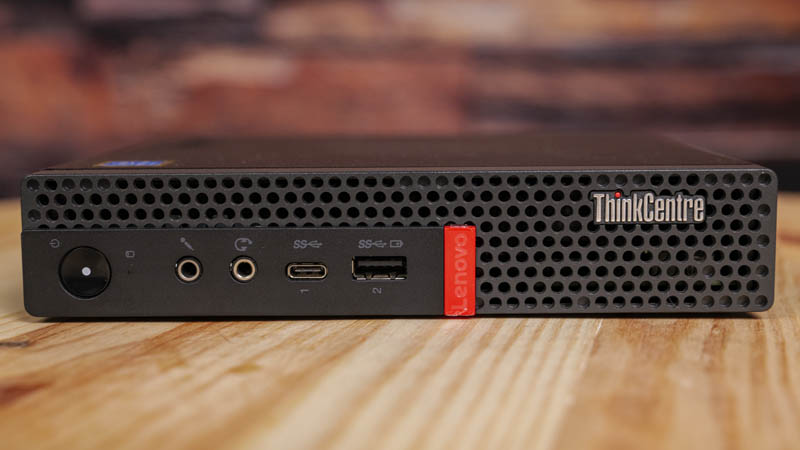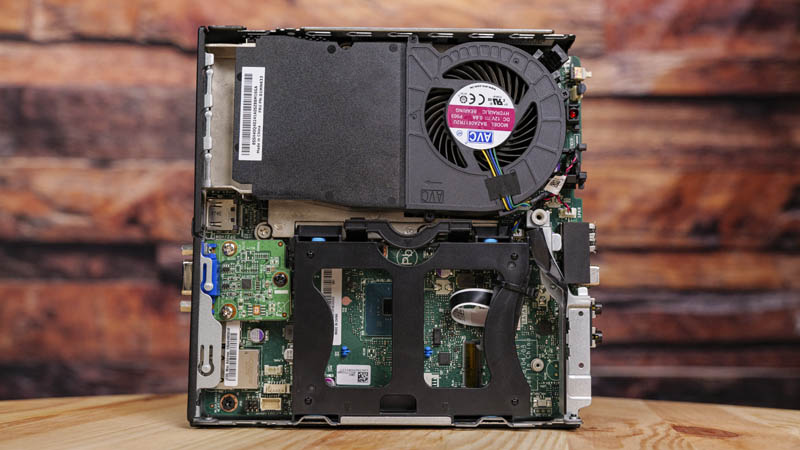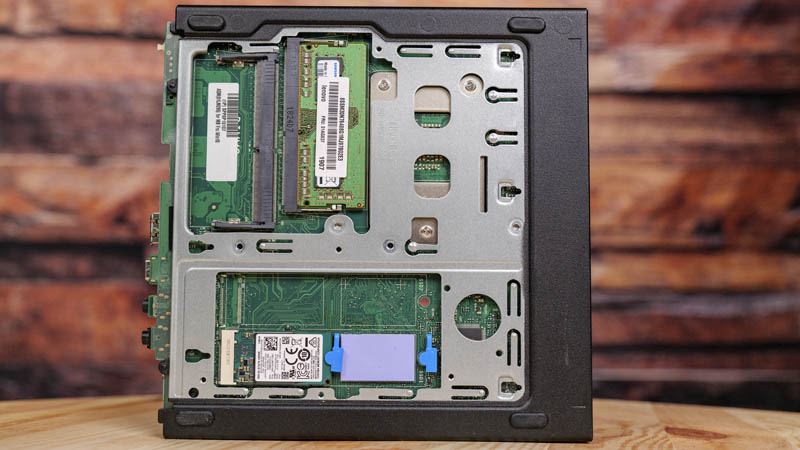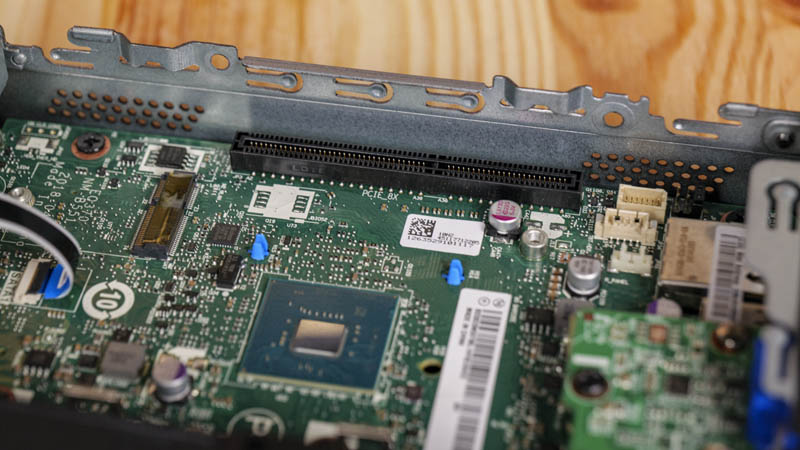Key Lesson Learned for TMM
In this series, we wanted to also focus on some key lessons learned. Since we have already tested well over a dozen different models, we are taking away key pieces of advice from each that we wanted to share.

First, this did not come with a Windows 10 license. The majority of the units we have purchased do so this is something just a bit different. If you are looking for more than a Linux box, then you may want to have an embedded Windows 10 Home, or better yet Pro license with this system. On the Lenovo online configurator, at this time, it defaults to at least include a Windows 10 Home license, but this was clearly not always the case.

Our second key takeaway is the Intel Pentium Gold and its lackluster performance. This is one of the newer Project TinyMiniMicro nodes, yet it is also one of the slowest. We saw a similar performance in our Intel Pentium Gold G5420 Benchmarks and Review piece that we did around the time of our HPE ProLiant MicroServer Gen10 Plus Review. We hope that Intel simply standardizes instructions that are included in each generation of processor-socket combination. We can see little reason for Intel to exclude some instructions here since the performance of a low-frequency dual-core CPU is going to be low enough these days that a further reduction in instructions is not needed. Further, it is actually not the lowest end CPU that was offered in the M720 Tiny as there was a 2C/2T Celeron option as well. If possible, especially purchasing second hand, we think the Core i3 and better yet the Core i5 is a much better value.
Final Words
At around $185 used/ $366 new this is the least expensive unit, we have tested thus far. At the same time, it is also the least capable. Having tried both this unit, along with the Lenovo ThinkCentre M720q Review unit, we can see that the limitations we are running into are configuration-based, not system-based. If you just need a third node, say as a Proxmox VE cluster witness node, then something that is low cost and low power like the configuration we tested for Project TinyMiniMicro is a great option. In that scenario, you are optimizing on cost rather than performance.

The system itself is designed well. We especially like the concept of the PCIe riser to Intel i350-T4 option. From the factory, one can get the riser, i350 NIC, upgraded power brick, and rear I/O faceplate for less than many genuine i350-T4 cards at retail. There are, of course, other less reputable i350 cards that are less expensive. Going your own route means finding a hard to source proprietary PCIe riser and figuring out a backplate solution. Still, the prospect of one of these units with a high-quality quad-port i350 NIC is tantalizing. If you found a Core i5 or similar unit with this option, it would be worth a very strong look.

Overall, this is a very nice unit and is a step up on serviceability from our Lenovo ThinkCentre M715q Tiny. The extra “5” in the numeric product name is very significant. Serviceability is great and so upgrading features such as storage and RAM is simple. The addition of high-speed 10Gbps USB 3.1 Gen2 is also great since that opens up USB ports for storage and network adapters as well. Finishing this CE review compared to some of the other units, we feel like the overall system is good, but the configuration we chose was lacking. Luckily, that is easy to remedy by looking up the stack. These are generally going to be found at higher prices since many are still covered by on-site warranties from Lenovo and they are still technically a current-gen unit. Over the next few quarters, as Lenovo discontinues these units to make room for new offerings, we expect these to become a better value with higher-end configurations.




Sadly these are laptop-grade “T” CPUs. The only TMM desktop I know that uses proper desktop CPUs is the HP EliteDesk 800 G5 Mini. I have one with an i7-9700K and one with an i9-9900K (95W).
I believe some Lenovos can be configured with 10G Ethernet, however, although how much that matters when the CPU is likely the bottleneck is anyone’s guess.
These are fairly recent CPUs with modern hardware instructions. 10Gb isn’t really much of a bottleneck anymore. I have a 720q w/ dual 10Gb and it handles just fine.
@ R/L where did you get the 10Gb version? their website just shows 1Gb/ Quad 1Gb configs
Have a look at the following image with a 10GbE PCI low-profile card inside:
https://imgur.com/GvHzxsJ
Found in the Lenovo forum:
https://forums.lenovo.com/t5/ThinkCentre-A-E-M-S-Series/ThinkCentre-Tiny-PCIe-Riser-card-p-n-01AJ902-Taisol-M920q-M910q/m-p/4452024
I have thinkcentre m720q.Did support i9 9900T ES Processor? B360 Chipset.tnx and best regards
Glad to see this supports Windows 19 Home 64 when it comes out. /s
What is the max supported SDD size ? Which model you suggest for Lenovo m720p.